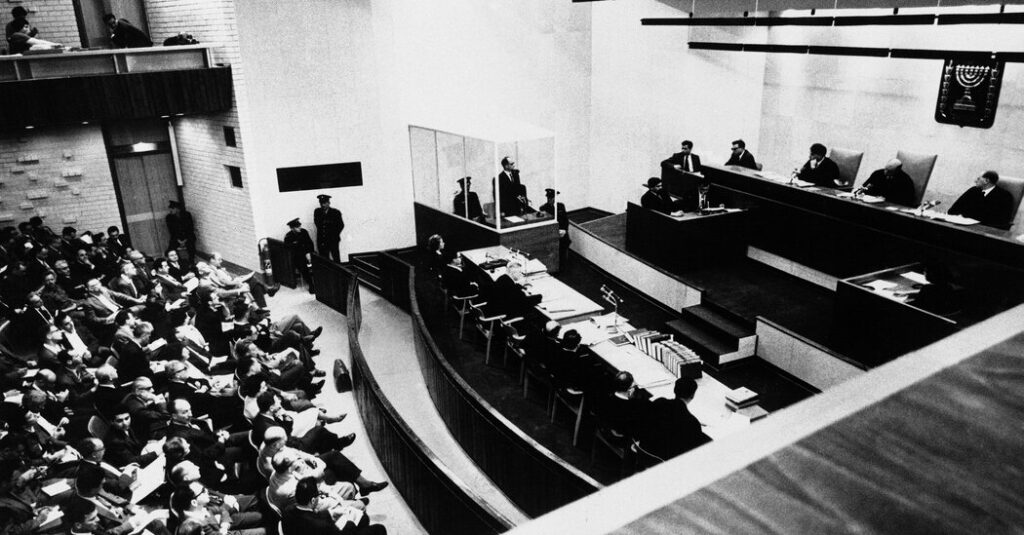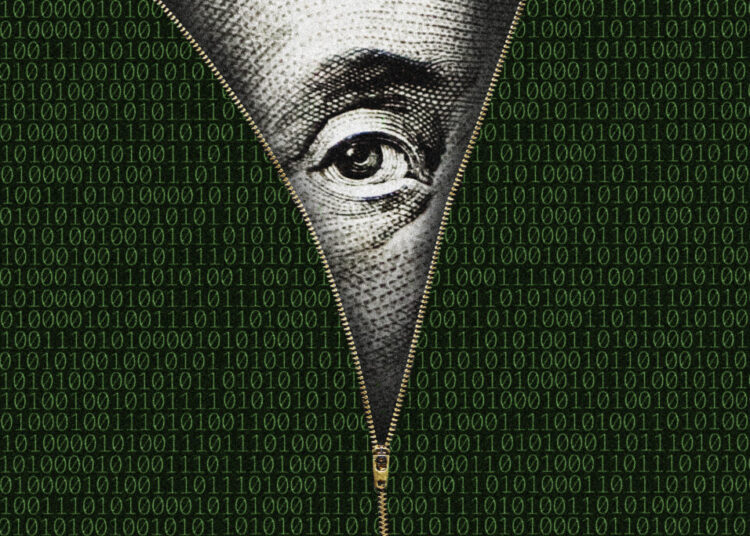One man kneels at the edge of a pit filled with bodies. He knows that, within moments, he will be dead. His drawn face burns with defiance. Behind him stands a uniformed, bespectacled Nazi soldier. In his extended right arm, the soldier holds a pistol, just inches from his victim’s skull. A crowd of other Germans stands watching, curious but undisturbed.
This harrowing scene, captured in a 1941 photograph known as “The Last Jew in Vinnitsa,” became an iconic image of the Holocaust for the way it captured the banal savagery of mass slaughter. But for decades, nobody could answer the most basic question the photograph posed: Who were these two men?
That mystery was partly solved last month by Jürgen Matthäus, who recently retired from his post as the head of research at the U.S. Holocaust Memorial Museum in Washington, D.C. According to an article he wrote for the September issue of The Journal of Historical Studies, a German-language publication, the killer was Jakobus Onnen, 34, a former teacher from the town of Tichelwarf, near the German border with the Netherlands. After one of Mr. Onnen’s living relatives provided Dr. Matthäus with family photos, an artificial intelligence tool made the match with 99.9 percent confidence.
The photo emerged in 1961, during the Jerusalem trial of high-ranking Nazi functionary Adolf Eichmann. It had been in the possession of Al Moss, a Holocaust survivor who said he had acquired it in 1945 but knew nothing of its context. Mr. Moss said he had made the photo public so the world would “know what went on in Eichmann’s time.” With unimpeachable clarity that remains intact decades later, the photo places the viewer in a gruesome setting that refuses rationalization.
“It’s just stunning,” said Christopher R. Browning, a scholar who has written several books about the Holocaust. Dr. Browning said it was rare for Holocaust photographs to contain so much detail about perpetrators and victims alike. “That’s why the photograph is just so powerful.”
Historians have long struggled to understand the psychological makeup of the Holocaust’s perpetrators, some of whom were well-educated, prosperous professionals in early middle age, as opposed to fanatical young men. In postwar trials, they claimed that they harbored no antisemitic sentiments.
Dr. Browning’s 1992 book “Ordinary Men” upended how scholars understand the Nazi henchmen who murdered six million Jews and millions of other people they considered opponents, including homosexuals, communists and Jehovah’s Witnesses. Imbued with years of propaganda and discouraged from independent thought, many of them committed genocide out of what they perversely believed to be professional obligation.
Mr. Onnen died in 1943, possibly at the hands of Soviet partisans. The identities of Mr. Onnen’s victim, and of the photographer, remain unknown.
“Within the scene of Holocaust studies, this is pretty big news” said Katja Hoyer, a scholar of German history who wrote about Dr. Matthäus’s discovery in her newsletter. Knowing the identity of the perpetrator is a “massive step,” she said, toward endowing the photograph with context that makes it more than just a macabre relic.
Such photos were seen as “trophy items,” Dr. Matthäus said. “It’s like pornography, you show it around.” In a society conditioned to cruelty, cruelty did not need to be disguised.
Dr. Matthäus is a native of Dortmund, in western Germany, where the Nazis ran a notorious prison called Steinwache.
In a 2024 article for the journal Holocaust and Genocide Studies, Dr. Matthäus wrote that the photo, which was long thought to have been taken in Vinnitsa, a Ukrainian town that was then part of the Soviet Union and the site where Hitler was to build his “Wehrwolf” complex, was actually taken in Berdichev, about 50 miles to the north. Dr. Matthäus came to that conclusion after discovering the diary of Walter Materna, an Austrian soldier, at the Holocaust Museum in Washington. A version of the “Vinnitsa” photograph was pressed between the diary’s pages. Mr. Materna had written details on the photograph. The massacre took place on July 28, 1941, within the walls of Berdichev’s citadel.
The mass killing was carried out by one of the Einsatzgruppen death squads formed by the SS chief Heinrich Himmler, the most powerful figure in the Third Reich after Hitler, and his top subordinate, Reinhard Heydrich. Following the German army, or Wehrmacht, as it advanced toward St. Petersburg (then called Leningrad), Moscow and Kyiv (Kiev at the time), these units terrorized the Soviet countryside, shooting hundreds of thousands of Jews, including women and children, in what has come to be known as the Holocaust by bullets. (The death camps associated with the genocide of European Jews were a later development, as some Einsatzgruppen commanders complained about the toll that mass shootings were taking on their men, many of whom took to heavy drinking.)
“These are not nuts,” Dr. Browning said. “They are committed true believers, but they basically are not dumb people, and they’re not crazy in the sense that they’re out of touch with reality.” Rather, years of antisemitic, nationalistic propaganda closed off whatever was left of their basic humanity. (On the whole, Mr. Onnen’s membership in the SS would suggest at least somewhat more ideological commitment than that evinced by Dr. Browning’s “ordinary men” of Reserve Police Battalion 101.)
Mr. Onnen was born in 1906, into a comfortable family. His father, an educator, died in 1924, which proved a “crucial event,” Dr. Matthäus wrote in his new paper. Mr. Onnen joined the Nazi Party in 1931, two years before Hitler came to power, and became an SS member in 1932. For several years in the 1930s, he taught languages and physical education at the Witzenhausen Colonial School.
During this time, Mr. Onnen published “minor works in Nazi serials,” according to Dr. Matthäus. In one letter to a school administrator in Witzenhausen, Mr. Onnen confessed that his visit to Spain in the run-up to the civil war there had left him discomfited at the level of violence. He also watched a bullfight, describing it as “extremely bloody butchery.”
Mr. Onnen made several unsuccessful attempts at marriage before finding a wife in 1939. That summer, shortly before Hitler invaded Poland, Mr. Onnen joined the SS Death’s Head Unit at the Dachau concentration camp. He served as a training officer in Poland before joining Einsatzgruppe C in 1941. It was commanded by Otto Rasch, a well-educated lawyer and politician who became an enthusiastic executor of Hitler’s murderous plans. “Yes, he was indoctrinated,” Dr. Matthäus said of Mr. Onnen. “But what is probably more important is that you are part of a machine, and if you don’t make a deliberate decision to get out of it, you get further drawn into this.”
Berdichev fell to the Germans in early July 1941, as the Wehrmacht prepared for its assault on Kyiv. The killing of Jews would take place there throughout the summer and fall. But the German war machine eventually ground down, slowed by partisan units, the brutal winter weather and the Soviet Union’s seemingly endless supply of troops.
Mr. Onnen was killed on Aug. 12, 1943, as the Red Army finally gained offensive momentum on the Eastern Front.
After Dr. Matthäus published his first article on the photo, he received an email from a “retired schoolteacher” who believed that Mr. Onnen had been his wife’s uncle. “This horrifying image has played a role in our family for decades,” the retired schoolteacher wrote, in reference to the recently published paper on the photograph.
Letters that Mr. Onnen had written, and which might have shed invaluable light on his wartime service, had been destroyed long ago. But photographs remained, and the retired high school teacher shared them willingly. In an email exchange, the retired teacher, who requested anonymity to avoid being publicly associated with Mr. Onnen’s crimes, said that Mr. Onnen was “hardly ever mentioned in family settings.” He began to compile what he described as a “detailed biographical study,” only after his aging mother-in-law gave him permission to do so.
Dr. Matthäus received help from Yorck Olaf Schumacher, a German doctor who lives and works in Qatar. In the early stages of Israel’s war against Hamas, Dr. Schumacher had become suspicious of claims that an Israeli airstrike had killed hundreds of people in Al-Ahli Arab Hospital in Gaza City. To investigate the claim, Dr. Schumacher started following, and participating in, the work of Bellingcat, a loose network of digital sleuths who examine open-source intelligence, or OSINT, such as satellite images, social media posts, news reports and publicly available documents. (A visual investigation by The New York Times into the hospital strike was inconclusive, although U.S. intelligence agencies cast blame on Palestinian militants.)
Much like Mr. Onnen’s relative, Dr. Schumacher had initially reached out to Dr. Matthäus after reading news reports on his research into the “Vinnitsa” photograph. He and other Bellingcat researchers first definitively located the site of the massacre as the interior of a walled Carmelite monastery, going so far as to pinpoint where the photographer and Mr. Onnen would have been standing, as well as the pit of Jewish victims.
“That was fairly straightforward,” Dr. Schumacher said in an interview. He estimates that portion of the work took no more than half a day.
Then, they turned to the prewar photos of Mr. Onnen. To make a match between those images and the infamous 1941 photo, they used Amazon Rekognition, an artificial intelligence tool that has been used — controversially — by law enforcement agencies.
“There’s many, many, many measures that these software take automatically,” obviating the need for manual analysis, Dr. Schumacher said. The software assigns numerical values to facial features, such as the distance between the eyes, a process known as vector embedding. One sequence of values can then be compared against another.
The photo from Berdichev was then compared to the photos provided to Dr. Matthäus and subsequently shared with Bellingcat researchers. “The probabilities were above 99 percent,” Dr. Schumacher said, both when the comparison was purely automated and when subject to review by humans.
Still unknown is the identity of Mr. Onnen’s victim. “The picture that we have from the victim is actually much better than from the shooter,” Dr. Schumacher said. “If the guy is somewhere in a picture, and we get to analyze that picture, I’m pretty confident that we can match him.”
But for the A.I. tool to make such a match, it must have photographs for comparison. Dr. Matthäus was not optimistic about his chances, given the utter destruction of Jewish communities by the Nazis.
Berdichev’s dead were famously memorialized by the Soviet journalist and novelist Vasily Grossman, who reported on the Holocaust during World War II for Russian newspapers. Among the Nazis’ victims in Berdichev was Mr. Grossman’s mother, Anna, who was killed there in 1941.
Mr. Grossman fictionalized her plight in his epic novel “Life and Fate,” suppressed for decades by Soviet censors and published in English in 1985. “Today the Germans came and took eighty young men to work in the fields, supposedly to dig potatoes,” the protagonist’s mother writes from a besieged Berdichev, where she knows she will soon meet her own end. Her lengthy letter is considered the novel’s crowning achievement, a fictional but faithful testament to the battle between resignation and resilience.
“Some people were glad, imagining the men would be able to bring a few potatoes home for their relatives,” she goes on to tell her son. “But I knew all too well what the Germans meant by potatoes.”
The post At Last, a Name for the Murderous Face in a Holocaust Photo appeared first on New York Times.




